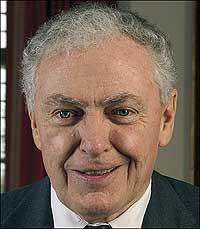Message from the President
Colonial Williamsburg's Many Dimensions
People come to Colonial Williamsburg for lots of reasons—to learn, of course, but also to be entertained, to unwind, to shop, to dine, to play golf. Make no mistake: first and foremost this is an educational enterprise, a restored eighteenth-century city that preserves and teaches early American ideals. But a visit or a vacation has always been multidimensional. If most guests come for the lessons of liberty and freedom, or to admire wonderfully restored buildings, fine eighteenth-century decorative arts, and treasures of American folk art, they also expect the Colonial Williamsburg experience to include modern leisure-travel diversions and amenities.
Inside and outside the Historic Area, fresh endeavors are bringing new energy and enjoyment to the destination experience for which Colonial Williamsburg is so justly renowned. Most recent is the start of the restoration, expansion, and improvement of the venerable Williamsburg Lodge, the casual, airy, comfortable complex of rooms, restaurants, exercise facilities, and meeting spaces adjacent to the outdoor museum. The sixty-five-year-old Lodge is the engine that drives our guest enterprises; its overhaul will offer expanded services for vacationers, increase convention and conference opportunities, and offer new options for the local community.
As work began at the Lodge, it ended at the College Corner Building, a triumph of architecture and workmanship on Merchants Square. Its tenants include a new domestic furnishings shop, Williamsburg At Home, successor to the Craft House at the Inn. The building is a short stroll down the broadened and beautified sidewalks of Prince George and North Boundary Streets from the city's new, beautifully designed 360-space car garage.
This issue of Colonial Williamsburg spotlights the College Corner Building and details the Lodge project. Previous editions reported the opening of Great Hopes Plantation, the revitalization of the Williamsburg Inn, the inauguration of a more dynamic approach to educational programming, and the conversion of Prentis Store to sales of Historic Trades goods. They've described the future move of the Abby Aldrich Rockefeller Folk Art Museum to better quarters at the Public Hospital, where it and the DeWitt Wallace Decorative Arts Museum will become the Museums of Colonial Williamsburg. The Craft House on Merchants Square is reconfigured. The new pedestrian bridge carries guests from the renovated Visitor Center to the Historic Area. Training programs are rejuvenated. Celebrations—a garden, decorations, and Christmas shop—is open. The Rockefellers' handsome and highly personal Bassett Hall is refurbished.
All of which underscores our conviction that if guests come for one purpose, they often stay for another. That's important. The success of our educational mission depends not only on making a visit lively and engaging but on income from our hospitality businesses as well as admissions. It means we must attract a variety of guests, if only for a single purpose: That the future may learn from the past.
Colin G. Campbell

